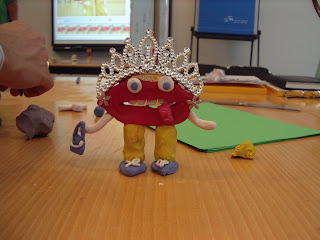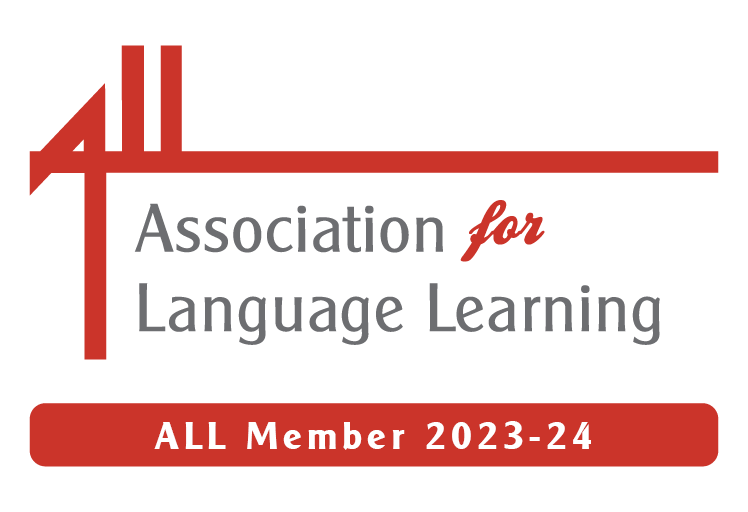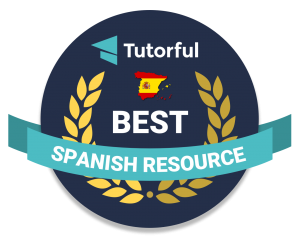 Having spent all weekend working hard (honest!) at the eTwinning conference in Nottingham, the last thing I fancied today was an Inset day. This was partly due to fatigue but also as I didn’t want to lose the thoughts that are still floating around my mind following the excellent CPD over the last few days. So many ideas, so little time! A further complicating factor was the need to produce evidence for our school ‘Curriculum for the 21st Century’ display that each Head had to put up for today’s proceedings. Flattered to be asked but lots of work – hence the Twittering about laminating.
Having spent all weekend working hard (honest!) at the eTwinning conference in Nottingham, the last thing I fancied today was an Inset day. This was partly due to fatigue but also as I didn’t want to lose the thoughts that are still floating around my mind following the excellent CPD over the last few days. So many ideas, so little time! A further complicating factor was the need to produce evidence for our school ‘Curriculum for the 21st Century’ display that each Head had to put up for today’s proceedings. Flattered to be asked but lots of work – hence the Twittering about laminating.
Despite my misgivings, I have to say that I enjoyed today and found it quite exciting!
The theme of the day was ‘A curriculum for the 21st Century’ and the day was actually an Inset for our cluster of local schools based around the Creative Curriculum.
We started the day with a definition of creativity – ‘bringing into being something that did not exist before’ – before moving on to consider our aims for our pupils, deciding that it’s not content as much as attributes and skills that are at the heart of what we want. What really excited me was that the things being said fitted so well with what I had been hearing (and agreeing with!) in Nottingham, particularly in George Glass‘s presentation about collaborative communities, raising self esteem, nurturing empathetic youngsters who can work cooperatively in teams, becoming effective learners and local and global citizens.
The idea of working creatively was likened to building a house – the house won’t be bui lt by leaving a pile of bricks on the plot – you need to put them all together. There was also the analogy of a tree with content as the leaves, and attributes as the roots (teamwork / reflective learners / self managers / creative participants / independent enquirers), held together by the trunk of learning experiences.
lt by leaving a pile of bricks on the plot – you need to put them all together. There was also the analogy of a tree with content as the leaves, and attributes as the roots (teamwork / reflective learners / self managers / creative participants / independent enquirers), held together by the trunk of learning experiences.
And the picture I liked best was about throwing things! If you throw a dead bird, there are laws etc that make it possible to calculate how far it will travel, but if the bird is alive, there is no way of knowing. The vision was of the creative curriculum as a way to launch live birds into the world, hoping that they will soar , becoming things of beauty rather than plummeting to the ground. Perhaps I’m just a sucker for a good analogy, but this made sense to me!
I can see that thinking creatively and given pupils more responsibility for their learning is desirable – we want children to remember things – what’s more memorable than finding out for yourself, and enjoying the process? I could have downloaded Oscar Stringer’s notes on  animation and learned that way, and without the opportunity to experience the workshop, that would have taken me through the necessary steps. However, being there, hearing the instructions first hand whilst watching what to do and then working with a group of people to create and animate our own ideas was so much more memorable.
animation and learned that way, and without the opportunity to experience the workshop, that would have taken me through the necessary steps. However, being there, hearing the instructions first hand whilst watching what to do and then working with a group of people to create and animate our own ideas was so much more memorable.
We were allowed to play around with the plasticine (and we did!) without being told off – how often do we give kids something that they’re dying to play with (as a language teacher, I’m thinking of dictionaries), only to tell them that they’ve got to do it our way? Wouldn’t it be better to let the pupils ‘play’ first and discover for themselves with guidance where necessary?
As a Primary Languages teacher, I think I’ve become increasingly creative in my teaching, looking for ways to embed the subject across the curriculum, and I believe that’s one of the reasons why I was asked to present some ideas and evidence for the display. It was good to talk to teachers from other schools about eTwinning, International School Award, Voices of the World, EDL, links with Canada and USA as well as Spanish from 3-11, and to share some ideas that they could use in their schools. And, in the end, it wasn’t too onerous to miss lunch and stand by our display talking to colleagues, because I wholeheartedly believe that being creative is the way to go.
And we had a great time! Such a good time that I recorded them for posterity – and you can listen by going to my new Box of goodies! (you can also download the powerpoint if you want!) We didn’t stop there either – break came and I was inspired again – why not take the classroom outside – so we did. Outside went the box of puppets and we had another chorus of Diez animales this time using the puppets as the actors and the shelter as our stage. The boys weren’t happy with the outdoor picture so we moved to the cloakroom for some more!





